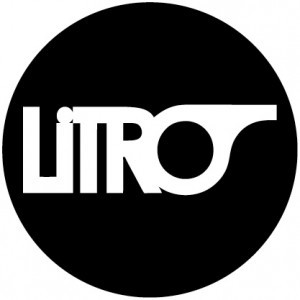Litro literary magazine: the ‘Whodunnit?’ issue
 Litro literary magazine, based in London and now with a New York edition too, has curated a series of delicious crime short stories for its recent ‘Whodunnit?’ issue.
Litro literary magazine, based in London and now with a New York edition too, has curated a series of delicious crime short stories for its recent ‘Whodunnit?’ issue.
As customary with Litro, the stories cover an eclectic range of settings, atmospheres and styles. They’re well-crafted pieces of writing taking the reader to a host of different places, from somewhere in the UK’s North-East to New York state suburbia, from Central London to San Francisco.
As guest editor Russ Litten, quoted in Litro Editor Eric Akoto’s blog, puts it: ‘While hardly any of these stories are Whodunnits in the classic sense, they all carry that indefinable core of mystery that pulls the reader towards the final sentence. They are all full of tension and exhilaration.’
‘Selbstmord’ by Simon Barget, the shortest of the lot, quivers with such tension. In just over 1,400 words Barget takes us on a disturbing journey into an unknown person’s mind. He sketches his character’s flawed psychology brilliantly, though perhaps he’s a little less effective in supporting the story’s startling premise with a believable conclusion. But I was devoured with curiosity as I read on, desperate to find out for what mysterious reason, legitimate or otherwise, someone was promising the protagonist the not indifferent sum of £ 100,000.
‘The Line Up’ by Russ Litten has a fuller structure and a more fleshed-out protagonist, a young misfit who emerges from an unspecified period of binge drinking/arguing with his girlfriend into a hangover-laden morning somewhere in a bleak part of England. He’s convinced by a passing police officer to take part in a line-up for purposes of criminal identification, in exchange for £ 10. Litten tantalisingly shows us how the young man spirals out of control while waiting for the witness to come forward, his present and immediate past a murky blur, only to be wrenched back to the present by an unavoidable fate – or chance.
‘A Remembrance Day Service’ by Barry Sheils features virtually none of the elements of a classic Whodunnit… except for the tingling sense of anticipation that pervades it. I found myself trying to outguess its characters (and author) at every turn as beautiful Lucy tells her intriguing tale to the touchingly shy narrator. As with the other stories, the deftness of the author’s writing is what allows the tension to build up and ensnare the reader.
‘Breakdown’ by CJ Timmins is equally permeated with a sense of foreboding, heightened by the utter normality of the setting: in suburban New York state, a young man is studying at home in the evening when he sees an ageing stranger having difficulties with his car’s flat tire. He reluctantly goes out to help him and is irretrievably caught up in the man’s family circumstances, uncovering layers of half-truths that he’s just unable to stop wanting to expose. Timmins does a fine job of charging up the ordinary with a creeping uneasiness, and letting it get to the reader.
‘Burn Down the House’ by Michael McGlade keeps us on the other side of the pond, in San Francisco. Of the six stories it’s the one with a more traditional crime fiction structure and characters: a shady PI, an unscrupulous ambulance-chaser of a lawyer, a rape and murder for which a man who protests his innocence has done 15 years of time in San Quentin. Standard fare? Not in the hands of McGlade, who maliciously infects the story with a clever subversive streak: the PI is a former cop who was kicked out of SFPD for … (can’t spoil it!), and we’re treated to his entertainingly unorthodox investigative methods as he tries to shake the dust off the old murder case.
‘The Telephone Museum’ by Felicity Hughes transports us to Central London’s busy Tottenham Court Road… and immediately away from it into a rather weird telephone museum, where the protagonist Sam pursues a friend from his early teenage years he’s lost touch with. Hughes plays the story out by contrasting Sam’s contemporary communications industry sleekness with the dusty, mysterious atmosphere surrounding his lost friend Anton and the unfathomable museum Sam’s keen to discover the exact meaning of. It’s a hunt for something as undefined as childhood memories, spurred on by a yearning for the out-of-the-ordinary which is part and parcel of why we read crime fiction. And as with every good crime fiction story, Hughes turns it all on its head at the end, leaving us floundering just as Sam is, and wondering how exactly the rug was pulled out under our feet.
The shared thread of suspension/anticipation running through all the stories works very well, and proves how (supposedly) genre fiction can reach out to readers over the genre fence and exercise the magic that any fine fiction does: captivate, disturb, excite and, ultimately, give us food for thought.
Well done Litro for this Whodunnit collection of short stories, we look forward to more!



